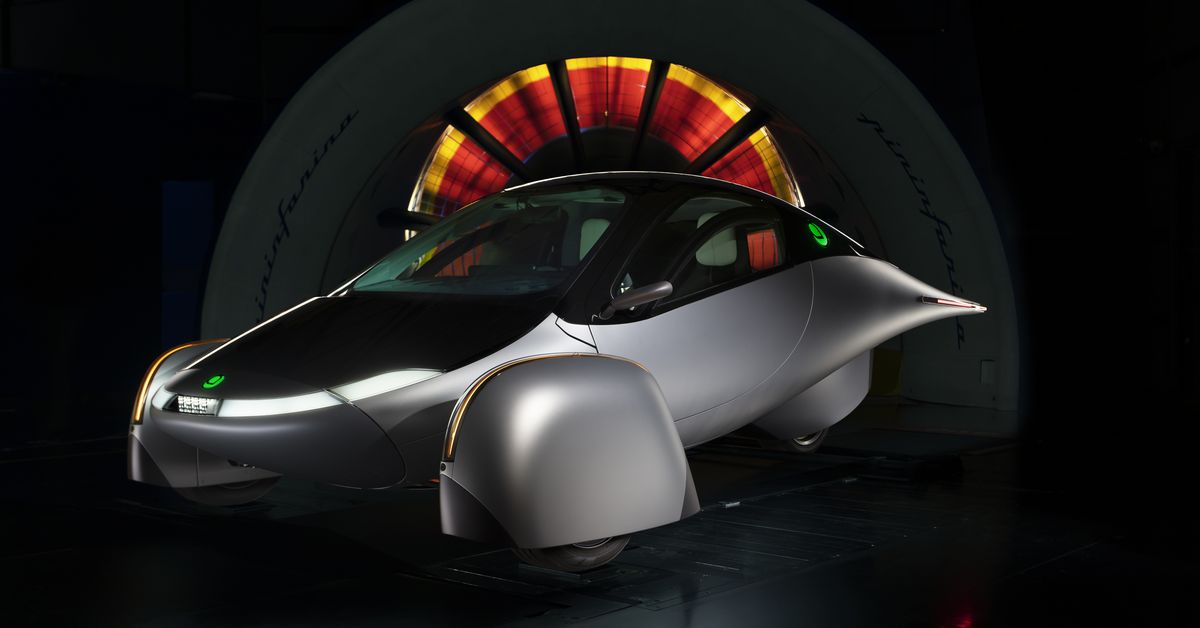Introduction
After a tumultuous past, Aptera, a California-based startup, is attempting to revive its solar-powered electric vehicle project. The company has unveiled a new "production-intent" prototype that boasts an ultra-efficient design, thanks in part to a collaboration with the renowned Italian automotive design house, Pininfarina. In this article, we’ll delve into Aptera’s latest attempt to bring its innovative three-wheeled solar-powered electric vehicle to market.
A Brief History of Aptera
Before diving into the new prototype, let’s take a brief look at Aptera’s history. The company was first established in 2005 with the goal of creating an affordable, fuel-efficient, and environmentally friendly vehicle powered by integrated solar panels. However, after facing financial difficulties and failing to secure funding, Aptera shut down in 2011.
The Resurrection of Aptera
In 2020, Aptera reopened its doors after successfully raising funds through crowdfunding and other means. This marked a significant milestone for the company, as it paved the way for the development of new products, including the latest solar-powered electric vehicle prototype.
Introducing the New Prototype
The new Aptera prototype is an ultra-efficient three-wheeled electric vehicle powered by embedded solar panels. The vehicle’s design has been refined using Pininfarina’s expertise and resources, including access to their wind tunnel in Turin, Italy. According to Aptera, this partnership has enabled the company to achieve one of the lowest drag coefficients of any production passenger vehicle, setting a new standard for energy efficiency in the automotive industry.
Key Features of the New Prototype
The new Aptera prototype boasts several key features that make it an attractive option for eco-conscious drivers:
- Integrated Solar Cells: The vehicle is equipped with 700W of integrated solar cells, allowing most drivers to drive every day without ever needing to plug in to charge.
- Solar-Powered Range: The cells can provide up to 40 miles of solar-powered range each day.
- Extended Battery Life: The ability to travel up to 400 miles on a single charge makes the Aptera an excellent option for those who need a reliable vehicle for long road trips.
Comparison with Other Electric Vehicles
While Aptera’s new prototype is an impressive feat of engineering, it’s essential to compare its performance with other electric vehicles on the market. According to Aptera, their previous prototypes achieved a drag coefficient of 0.13, compared to 0.23 for Tesla’s Model 3. This suggests that the Aptera is more efficient than many popular electric vehicles.
The Challenges Ahead
While Aptera has made significant strides in developing its solar-powered electric vehicle, there are still several challenges ahead. Securing funding will likely be one of the biggest hurdles for the company as it attempts to bring its product to market. The US Department of Energy’s advanced technology loan program was a major factor in Aptera’s previous failure to launch, and the company may face similar obstacles this time around.
Competition from Other Players
Aptera isn’t the only company exploring the potential of solar-powered electric vehicles. German startup Sono Motors has shifted its focus towards developing solar buses, while Mercedes-Benz has showcased a concept vehicle featuring a solar roof array of 117 cells. Toyota has also promised an optional solar roof for its recently released BZ4X electric SUV.
Conclusion
Aptera’s latest attempt to bring its solar-powered electric vehicle to market is an exciting development in the world of eco-friendly transportation. While there are still challenges ahead, the company’s collaboration with Pininfarina and its commitment to energy efficiency make it a player worth watching. As the automotive industry continues to evolve towards sustainability, Aptera’s innovative approach could potentially disrupt the market.
Future Developments
As Aptera continues to develop its solar-powered electric vehicle, we can expect to see further innovations in the field of eco-friendly transportation. The company’s focus on energy efficiency and sustainable design has set a new standard for the industry, and it will be interesting to see how other manufacturers respond.
Final Thoughts
Aptera’s resurrection is a testament to the power of innovation and determination. As the world continues to grapple with climate change and energy sustainability, companies like Aptera are pushing the boundaries of what is possible. Whether or not the company can overcome its challenges and bring its solar-powered electric vehicle to market remains to be seen. However, one thing is certain: Aptera’s commitment to eco-friendly transportation has sparked a new wave of innovation in the automotive industry.
Recommendations for Future Development
As Aptera continues to develop its solar-powered electric vehicle, we recommend that the company:
- Continues to refine its design: With access to Pininfarina’s resources and expertise, Aptera should push the boundaries of energy efficiency even further.
- Invests in marketing and branding: To compete with established players in the market, Aptera needs to build a strong brand identity and engage with potential customers through effective marketing campaigns.
- Explores new funding opportunities: The company may need to seek alternative sources of funding, such as venture capital or private investors, to support its development efforts.
By following these recommendations, Aptera can further solidify its position in the market and continue to drive innovation in the field of eco-friendly transportation.

